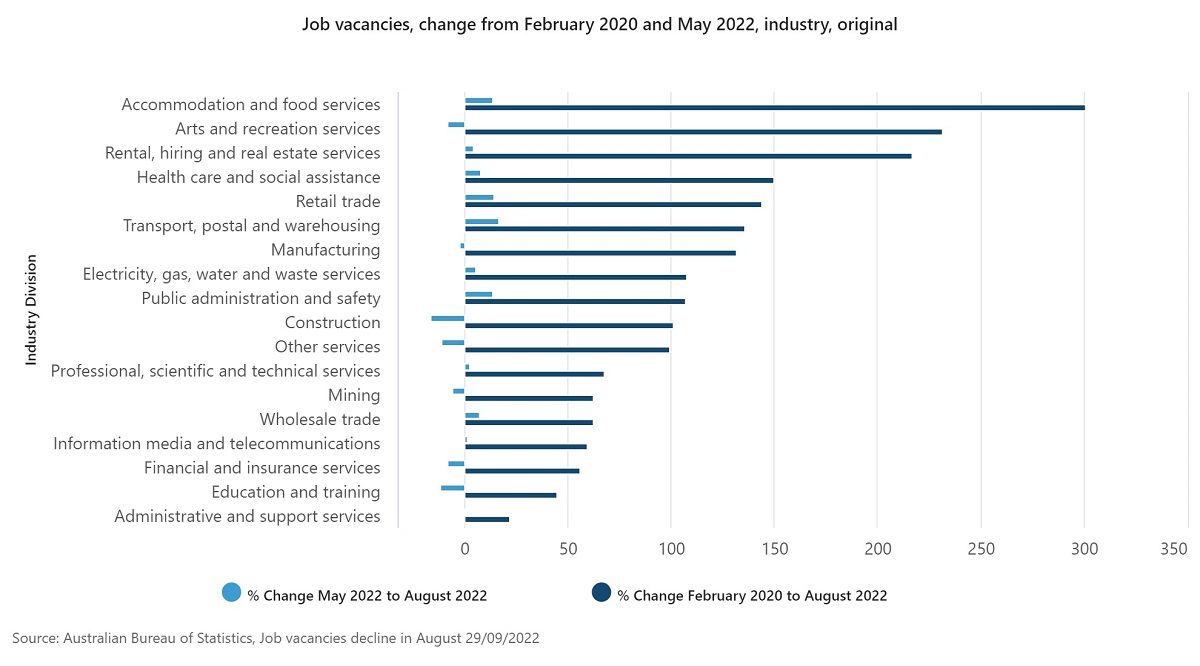The number of job vacancies in August 2022 has decreased by 10,000 from May 2022, to 471,000, according to new figures by the Australian Bureau of Statistics (ABS).
Job vacancies in August 2022 were 41 per cent higher than August the previous year during the height of the Delta Covid lockdowns.
Lauren Ford, Head of Labour Statistics at the ABS, said the large growth in vacancies through the pandemic has coincided with a decline in the number of unemployed people.
“As a result, there were a similar number of unemployed people (488,000) to job vacancies (471,000) in August 2022, compared with three times as many unemployed people to vacancies before the start of the pandemic.”

Anneke Thompson, Chief Economist at CreditorWatch, said the huge growth in job vacancies across the country seems to have finally reached a plateau, with the overall number of jobs available decreasing by two per cent, or 10,000 jobs, over the three months to August 2022.
“The industries that have seen the biggest drop in job vacancies is Construction, down 16 per cent, and Education and Training, down 12 per cent.”
Thompson said that Retail Trade and Accommodation and Food Services continue to see growth in the number of jobs available.
“This will put further pressure on salaries in these industries, particularly as we move into the very busy summer and Christmas period for these sectors.”
Retail Trade saw an increase of 15 per cent, which Ford says reflects ongoing labour shortages in a tight labour market, particularly in customer facing industries.
Across the states and territories, the largest quarterly percentage decline in job vacancies was in Tasmania (down 17 per cent) and Western Australia (down seven per cent). The largest percentage growth was in Queensland (up nine per cent), followed by Victoria (up five per cent).
Thompson said Queensland continues to see the impacts of strong migration, with the largest percentage growth in jobs available.
“This highlights that migration is not the sole answer to filling jobs, and migrants create demand for jobs as well as fill them.”
To stay up to date on the latest industry headlines, sign up to the C&I e-newsletter.

